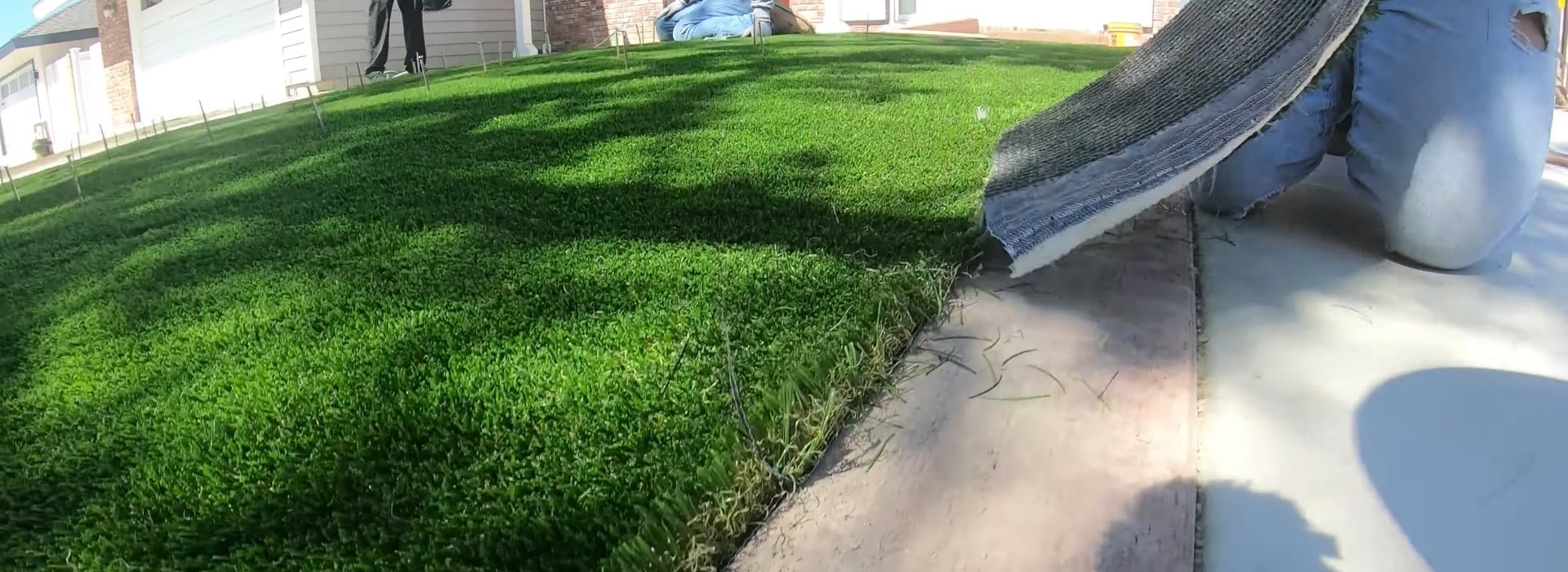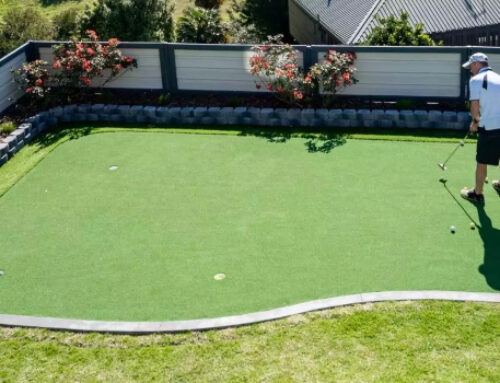So you’ve decided to install an artificial lawn.
Congratulations.
You’re about to join the thousands of Melbournians (and Australians) in enjoying a low-maintenance, eye-catching, multi-purpose surface that’s easy to enjoy 365 days a year.
But before you hang up the garden hose and kick back to enjoy your new green space, you’ll need to get the installation job done properly.
While synthetic turf offers a multitude of advantages, the wrong installation can leave you with an expensive headache.
In this comprehensive guide, we’ll delve into everything you should consider before embarking on your journey.
From understanding the various types and their applications to the importance of proper installation and ongoing maintenance, we’ve got you covered. By the end of this article, you’ll have a clear understanding of what it takes to make your artificial grass installation a resounding success.
Ready? Let’s go!
Step One: Understand the Types of Artificial Grass
Artificial lawn comes in various types, each designed for specific purposes.
The key distinctions lie in pile height, material, and purpose. Low-pile grass is suitable for areas with heavy foot traffic, while longer piles provide a more natural look. Additionally, some artificial turf is designed for landscaping purposes, while others are intended for sports fields. Be sure to choose the right type for your needs.
Step Two: Prepare the Ground
Proper ground preparation is crucial for a successful artificial grass installation. Start by removing existing grass, weeds, and debris. Ensure that the surface is smooth and even.
Depending on your location and the intended use of the synthetic grass, you may need to add a sub-base or drainage system to prevent water pooling and ensure proper water runoff.
Step Three: Choose Quality Materials
Not all synthetic turf is created equal.
Invest in high-quality materials that will stand the test of time. Look for grass with UV-resistant fibres to prevent fading from sun exposure. Check for drainage holes to avoid water accumulation. It’s essential to invest in quality to ensure your synthetic lawn maintains its appearance and functionality over the years.
Step Four: Proper Installation is Key
While some homeowners may attempt a DIY installation, we recommend hiring professionals for the job.
That might sound like we’re selling our own services, but there’s a reason why the pros can help you save time and money!
A well-installed artificial lawn requires proper cutting, seaming, and securing. Professionals have the expertise and equipment to ensure a flawless installation, which can make a significant difference in the final result.
Whether you opt to get in touch with our experienced, friendly team or another local synthetic turf expert, going with the pros is the most effective way to install synthetic turf without issues.
Step Five: (A Small Amount Of) Maintenance
While artificial turf requires less maintenance than natural grass, it’s not entirely maintenance-free.
Regular brushing with a stiff broom will help keep the fibres upright and maintain a natural appearance. Occasional cleaning is also necessary to remove dirt, debris, and pet waste. Fortunately, synthetic grass doesn’t require mowing, watering, or fertilising, saving you time and money in the long run.
What Else Should You Take Into Account Before Installation?
Are there pet-friendly options?
If you have pets, consider choosing an synthetic lawn designed with them in mind. These pet-friendly varieties often feature enhanced drainage and anti-microbial properties to help control odours. Regular cleaning is still essential to ensure a clean and hygienic environment for your furry friends.
What are the environmental considerations?
Synthetic turf is a water-saving alternative to natural lawns. However, it’s essential to be aware of the environmental impact of synthetic turf. Artificial lawn is typically made from non-biodegradable materials like plastics.
Some manufacturers are now producing more eco-friendly options with recyclable or sustainable materials, so inquire about environmentally responsible choices if this is a concern for you.
What about regulations and permits?
Before installing artificial turf, check with your local authorities and homeowners’ association, if applicable, regarding any regulations or permits needed. Some areas may have restrictions on the installation of synthetic turf or specific guidelines you must follow.
Is a synthetic surface a long-term investment?
Synthetic grass can be a significant investment, but it can also add value to your property and save you money in the long run through reduced water bills and lower maintenance costs. Consider it a long-term investment in your home’s aesthetics and functionality.
How Much Does Artificial Grass Cost?
The cost can vary significantly depending on various factors, including the size of your lawn, the type of grass you choose, and whether you opt for professional installation.
While the initial investment may seem substantial, remember that it’s a one-time expense, and you’ll save money on ongoing maintenance and water bills. Consider obtaining multiple quotes from reputable installers to ensure you’re getting a fair price.
Get the Full Guide: How Much Does Artificial Grass Cost?
Bonus Synthetic Grass Tips
Check For Warranty and Guarantees
When purchasing synthetic lawn, inquire about the manufacturer’s warranty and guarantees. Reputable manufacturers often offer warranties that can range from 5 to 15 years or more. These warranties typically cover issues like fading, fibre breakdown, and other product defects. Ensure you understand the terms and conditions of the warranty to protect your investment.
Opt For Regular Inspection and Maintenance
While synthetic turf is low-maintenance compared to natural grass, it’s essential to conduct regular inspections. Check for any signs of damage, wear and tear, or infill displacement. Address any issues promptly to prevent them from worsening. Routine maintenance will extend the life of your artificial turf and keep it looking pristine.
Be Proactive About Weed Prevention
One of the advantages is that it significantly reduces weed growth compared to natural lawns. However, it’s not entirely weed-proof. To prevent weeds from poking through the turf, consider applying a weed barrier fabric during installation. Regularly inspect and remove any weeds that may appear around the edges of your artificial turf.
Consider the Aesthetics
Synthetic grass can enhance the aesthetics of your outdoor space, but it’s crucial to consider its appearance in the context of your overall landscaping. Think about how it will complement other elements like plants, hardscaping, and outdoor furniture. A well-thought-out landscape design can create a harmonious and inviting outdoor environment.
Enjoy the Benefits!
Once your synthetic turf is installed and well-maintained, you’ll be able to enjoy its many benefits fully. These include a lush green lawn year-round, reduced water bills, a pet-friendly and allergen-free environment, and more free time to relax in your outdoor space rather than maintain it.
Consult with Professionals to Ensure a Well-Installed and Long-Lasting Lawn
Installing synthetic lawn can be a transformative decision for your outdoor space, providing you with a beautiful, low-maintenance lawn that’s both functional and visually appealing.
By considering the factors mentioned above, you can make an informed decision, ensure a successful installation, and enjoy the benefits of artificial grass for many years to come.
Before making a final decision, consult with professionals who specialise in artificial grass installation. Our experts at Reel Grass can provide valuable insights, recommend the right type of grass for your needs, and offer custom quotes tailored to your needs.
Reach out on 1300 306 389 for your 100% obligation-free quote.




